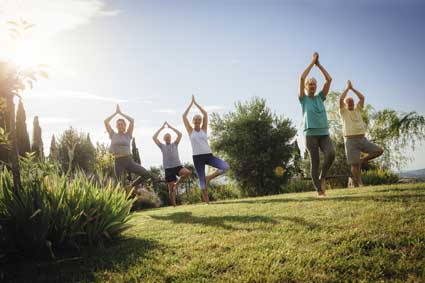Fire safety and the basics of fire behavior is very important knowledge to have for anyone, whether you rent, own a house, business, or farm. In this article, we will take a closer look at how a fire starts, as well as, the fire triangle, the fire behavior triangle, methods of heat transfer, the stages of a fire, fire weather, and fire behavior. Understanding fire behavior allows decision makers to place fuel reduction techniques where appropriate in calculated places. They specifically put them in areas that will most likely modify fire behavior. This helps to save lives, money, and property.
Unbelievably, weather actually influences the way in which a fire behaves. The topography and the amount and type of fuel that is available are also very important in the way a fire behaves. All three of these factors decide the direction a fire will travel, as well as the speed the fire will move, and the intensity of the fire.
Sources of Ignition
There are only two ways that a fire can start, either by humans or by the environment, including weather. Let us take a closer look at the sources of ignition. You just might be surprised at what normally starts most fires and their locations.
A. Humans
Unfortunately, humans are the leading cause of ninety percent of wildland fires in the United States. Many fires start when campers leave their fire unattended. The burning of debris, such as leaves, starts other wildland fires. Discarding cigarettes in areas that are very dry is another way wildland fires start. Equipment fires are also an ignition source. Finally, there are people that start wildland fires intentionally and light a fire in the wilderness. The environment starts only around ten percent of wildland fires.
According to 2014 national estimates of residential and building fires and losses, there were 379,500 fires, 2,765 deaths, and 12,075 injuries in the United States. The monetary value loss was at $6,900,300,000 during 2014. The leading cause of residential fires comes in at 189,500 fires from cooking. Heating devices caused 47,600 fires, electrical malfunction caused 23,900 fires, and other unintentional fires due to carelessness caused 22,000 residential fires. The 2014 statistical data is the most current available.
B. Environment
The environment causes wildland and residential fires by two ways: lava and lightning. Lava comes from volcanoes and can start fires that destroy towns and cities around the globe. Any communities living near active volcanoes are in danger of losing their lives and their homes.
Lightning sets fewer wildland fires; however, they can consume more than three times the acreage, than by a human leaving a campfire unattended. One thing that rural residents can do to help prevent lightning-caused wildland fires is to identify ignition sources around your property. Ask yourself the following questions, as all of them could be a possible ignition source and you may be able to help prevent a wildland fire:
1. Is there a housing development located below your property? Fire tends to travel uphill.
2. Do you allow hunters to use your property? That can be an ignition source for a wildland fire.
3. Do any power lines run through your property? They can be an ignition source during a storm.
4. Is your property located in an area that tends to produce more lightning? Several lightning strikes may cause a fire.
5. Is there a railroad located close to your property? Trains can sometimes produce sparks that may cause a fire.
Lightning is composed of two components, called stepped leaders and return strokes. The steeped leader is the charged electrons from an energy transfer that proceed to the ground at a velocity of around 200 miles per hour. As it approaches the ground, a large positive charge comes up to meet the steeped leader. When they make contact, a violent, high-current discharge travels to the ground, which creates the flash that we see in lightning. The discharge then travels back up the stepped leader in the return stroke.
There are also two different types of lightning consisting of cold lightning and hot lightning. Cold lightning's return stroke comes with an intense electrical current, but does not last very long. Hot lightning's return stroke comes with a lower intensity of electrical current, but occurs for a longer period, which is usually the ignition source for a wildland fire.
The Fire Triangle
The fire triangle consists of three elements, which include fuel (something that will burn), oxygen (O), and heat (enough to make the fuel burn). The fire triangle shown to the left illustrates what a fire needs to ignite. The fire symbol in the middle of the triangle represents the chemical reaction, which makes it a tetrahedron. Take away any one of these elements away and you will not have a fire or the fire will go out. Fire safety's basis comes from the principle of keeping fuel sources and ignition sources in different locations.
A. Four Ways to Put Out a Fire
There are four basic ways to put out a fire of any type. They are as follows:
I. If possible, try to cut off the oxygen source
II. Remove the source of the fuel
III. Cool the material that is burning, by water or fire extinguisher
IV. Break the chemical reaction
B. Special Circumstances
Several special circumstances can happen during a fire. A few of them are as follows:
I. During a fire, temperatures can rise as high as 1,000 degrees Fahrenheit in just a few seconds
II. During a fire, hot gases rise to the ceiling and spread out laterally and across the walls
III. During a fire, heat will radiate downward and intensify until all combustible materials reach their ignition point and burst into flames
IV. A rollover occurs when ignited fires gases, or partially burned fuels rise to the ceiling and spreads out horizontally
V. A flashover is the instantaneous ignition of all the materials in a room
VI. A backdraft is an explosion with the introduction of oxygen into a room full of hot gases
The Fire Behavior Triangle
The fire behavior triangle is similar to the fire triangle because it consists of three components, fuel, weather, and topography. The fire behavior triangle explains how a fire behaves once a fire starts. The complexity of how these components interact with each other is important knowledge for firefighters and homeowners alike.
There are elements under each main component of the fire behavior triangle that determines the way in which a fire behaves. Any kind of change in one of these elements can cause the fire to behave in a different manner, which can happen very quickly.
A. Weather
The weather component has the greatest influence on how fires tend to behave. The elements of the weather component that has the most influence on fire behavior are as follows:
I. Wind
Wind is the driving force of fire behavior, especially with catastrophic fires. The wind pushes oxygen into the fire, causing the fire to burn hotter. The wind can also blow the flames into unburned fuels, starting new fires.
II. Precipitation/Humidity
The amount of precipitation also has an influence on how a fire will behave. For instance, if it is raining hard and there is house fire, the rain may help to put the fire out.
III. Temperature:
The temperature of both the environment and the fire can dry out fuels, making newly dried fuels accessible for the fire to spread.
B. Topography
Topography has a very pronounced effect on the way in which a fire will behave in different landscapes. The elements of the topography component that has the most influence on fire behavior are as follows:
I. Aspect:
The aspect or the direction a slope faces has a great impact on the behavior of a fire. In the northern hemisphere, the southern facing slopes get the most sun and have the driest fuels as well. Fire tends to burn uphill and the steeper the slope the faster the fire can burn.
II. Terrain:
The terrain in which the fire is located can both determine the way in which a fire behaves and a way in which to stop a fire. For instance, lakes, rivers, and even deserts can stop the fire in its forward progress, allowing firefighters to contain the fire if they cannot stop it.
C. Fuels
We can consider a fuel to be anything that will burn in a fire. This includes grass, trees, piles of leaves or other debris and worst of all, your home or property.
There are also three types of fuels, which include ground fuels, surface fuels, and canopy fuels. They are as follows:
I. Ground fuels:
Ground fuels lie just under the surface and can burn underneath the ground for miles, and they usually burn very slowly.
II. Surface fuels:
Surface fuels burn on top of the ground and includes pine needles, leaves, grass, etc.
III. Crown fuels:
Crown fuels burn in the treetops making them very hard to control and put out.
Following are a few elements of fuel that affect fire behavior:
I. Arrangement:
The arrangement of fuels plays a big part in how a fire will behave. For instance, if you have a gas tank in your house, it may explode and fully engulf the house and change the way the fire behaves.
II. Fuel moisture:
The amount of moisture that is in the fuels while a fire is burning is another element that can affect fire behavior. For example, when the fuel moisture is low, such as in a grassland, the fire will burn hot and fast, depending on the wind. The drier the fuel, the faster it will burn. On the other hand, the wetter the fuel, the slower it will burn.
Fire Behavior Environments
We can define fire behavior as the manner in which fuels ignite, flames develop, and the fire spreads due to interactions of fuel, weather, and topography. The key to improving your situational awareness is to understand fire behavior within their own environments.
A. Structural Environments
In a structure, fire behavior changes in different ways than in wildfires. Structure fires tend to progress more rapidly due to the presence of synthetic materials, which are normally petroleum products in a solid form. Therefore, there is an increased threat of the amount of thermal energy output, which can quickly turn into a very bad fire situation.
Structure fires give off heat, smoke, and many toxic gases. Smoke is just as dangerous and destructive as the fire itself: the hotter and thicker the smoke, the quicker the flash point and it can ignite more fuels. Pockets of CO can ignite near the bottom of the smoke layer, which then causes a flashover or other types of explosions. For this reason, it is important for you to know what the fire is telling you so that you can make the correct decision during a fire, whether in your home or your business property.
B. Wildfire Environment
Wildfires behave in a different manner than structure fires. As previously mentioned above, wildfires come in three types including ground, surface, and crown fires. Many factors influence the way in which wildfires behave, such as climate, weather, topography, and geography.
The time of year tends to influence the effects of a fire and its behavior. For example, the wildland fire season in the southwest United States starts in October and runs through May. On the other hand, in the western United States fire season starts in June and runs through October. There is more moisture present during some seasons, which can reduce the wildfire threat in different geographical locations.
The composition of the fuel determines the degree of flammability in a wildfire. The moisture content is the most important consideration, as live trees contain more moisture than dead trees. Therefore, an environment with a high moisture content can actually slow the burning, as the fire must first dry out the fuel enough to ignite. The moisture content and distribution of the fuels can also define how fast and hot the fire will burn.
The chemical makeup of the fuels is another consideration to take into account during a wildfire. Some plants, shrubs, and trees contain oils that tend to fuel the combustion process, which causes them to burn more quickly or intensely than those that do not contain oils.
The density of a fuel also influences its flammability. For example, if the fuel particles are close together, they can ignite each other, which in turn cause the fuel to burn freely. On the other hand, if the fuel particles are too close together that air cannot circulate in, the fuel particles will not burn as freely,
Methods of Heat Transfer
First, we can define heat transfer as the physical process in which heat energy moves to and through unburned fuels. This allows the fuels to preheat prior to ignition, as well as adding to the spread of the fire. There are three methods of heat transfer, conduction, convection, and radiation.
A. Conduction
We can define conduction as the transfer of heat from one molecule to another. For example, if you try to grab a cast iron pot that is too hot to touch, that would be conduction at work. Conduction is the least important method during a wildfire, as wood is not normally a good conductor of heat.
B. Convection
We can define convection as the transfer of heat resulting from the motion of the air or a fluid. For example, a fire that spreads from surface fuels to aerial fuels is convection at work, which spreads the fire. The convection method also includes direct flame contact, which is a powerful heat transfer process, and tends to occur during a front fire.
C. Radiation
Lastly, we can define radiation as the transmission of heat energy by electromagnetic waves passing from a heat source to an absorbing material. For example, heat received from the sun and the preheating of fuels ahead of a flaming front.














